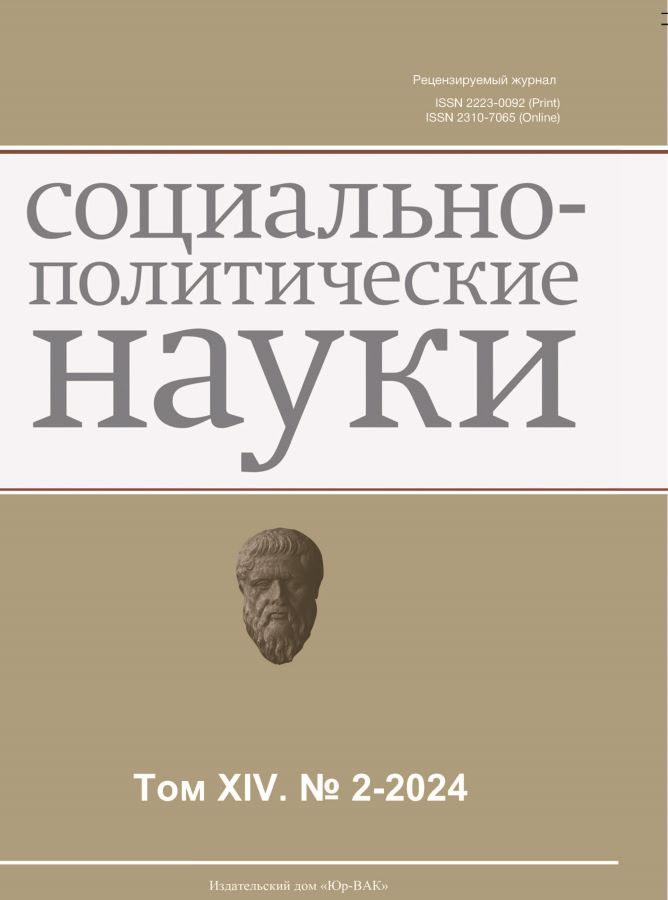The Republic of Kazakhstan’s Public Diplomacy: Main Features and Prospects
- Authors: Meshcheryakov K.Е.1, Leksyutina Y.V.2, Rozmetov A.S.1, Kuanyshbek A.K.1
-
Affiliations:
- St. Petersburg State University (SPbSU)
- Institute of China and Modern Asia of the Russian Academy of Sciences, Center for World Politics and Strategic Analysis
- Issue: Vol 14, No 2 (2024)
- Pages: 90-99
- Section: International Relations, Global and Regional Studies
- URL: https://journals.eco-vector.com/2223-0092/article/view/633837
- DOI: https://doi.org/10.33693/2223-0092-2024-14-2-90-99
- EDN: https://elibrary.ru/GXOOSW
- ID: 633837
Cite item
Abstract
The article aims to create a comprehensive view of Kazakhstan’s public diplomacy among the readership. It concludes that this phenomenon originated in the first decades of the existence of the Kazakh Khanate. At a time when the Kazakh lands were part of the Russian Empire and the USSR, the Kazakh people had no opportunity to pursue an independent foreign policy, the only element of which was public diplomacy. The revival of national public diplomacy became possible after Kazakhstan gained independence in 1991. For the last three decades, the main objective of Kazakhstan’s public diplomacy has been to create a positive international image of a newly independent Kazakhstani State and help its economy attract foreign investments. Such guidelines were designed to make favorable conditions for ensuring the socio-economic development of the country and the implementation of its foreign policy goals. Nowadays, Kazakhstan’s public diplomacy has three dimensions: political, economic and cultural, the main one of which is political. In the foreseeable future, Astana will remain interested in the active use of public diplomacy tools, in strengthening its status as one of the world’s best masters in this field.
Full Text
About the authors
Konstantin Е. Meshcheryakov
St. Petersburg State University (SPbSU)
Author for correspondence.
Email: k.mesheryakov@spbu.ru
ORCID iD: 0000-0002-7275-3074
SPIN-code: 4626-2405
Scopus Author ID: 56069787800
ResearcherId: А-1755-2014
Dr. Sci. (Hist.), Associate Professor; Professor, Department of Post-Soviet Area Relations
Russian Federation, Saint PetersburgYana V. Leksyutina
Institute of China and Modern Asia of the Russian Academy of Sciences, Center for World Politics and Strategic Analysis
Email: lexyana@ya.ru
ORCID iD: 0000-0001-6766-1792
SPIN-code: 9633-0244
Scopus Author ID: 57194420243
ResearcherId: I-6134-2013
Dr. Sci. (Polit.), Associate Professor, Professor of the Russian Academy of Sciences; Chief Researcher
Russian Federation, MoscowAlisher S. Rozmetov
St. Petersburg State University (SPbSU)
Email: st112400@student.spbu.ru
Master Student, Department of Post-Soviet Area Relations
Russian Federation, Saint PetersburgAruzhan K. Kuanyshbek
St. Petersburg State University (SPbSU)
Email: st081178@student.spbu.ru
Master Student, Department of Post-Soviet Area Relations
Russian Federation, Saint PetersburgReferences
- Kuznetsov N.M. The role of PR-events in the public diplomacy (on the example of the Day of Sweden in Russia celebration). International Communications. 2019. No. 3. (In Rus.) URL: https://intcom-mgimo.ru/2019/2019-12/role-of-pr-events-in-public-diplomacy (data of accesses: 29.02.2024).
- Mesceryakov K.Y. Integration processes in Central Asia and Russia’s position. Eurasian Integration: Economics, Law, Politics. 2013. No. 13. Pp. 225–233. (In Rus.)
- Nazarbayev N.A. Ideological consolidation of society as a condition for the progress of Kazakhstan. Almaty: Kazakhstan XXI century, 1993. 32 p.
- Nazarbayev N.A. On the threshold of the 21st century. Almaty: Atamura, 2003. 256 p.
- Nazarbayev N.A. Drafting project on the Establishment of the Eurasian Union of States (Almaty, June 3, 1994). In: The Eurasian Union: Ideas, practice, prospects. 1994–1997. Moscow: Foundation for the Promotion of Social and Political Sciences, 1997. Pp. 38–50.
- Naumov A.O., Belousova M.V., Andreeva N.V. From propaganda to public diplomacy: The emergence and development of an original concept. Public Administration. Electronic Bulletin. 2023. No. 96. Pp. 163–175. (In Rus.)
- Solomatina A.R. Digital Silk Road as a component of the “One Belt and One Road” initiative. Post-Soviet Studies. 2021. No. 4. Pp. 296–307. (In Rus.)
- Sultanov B.K. Kazakhstan’s Chairmanship in the OSCE and current security problems in Eurasia. In: The Republic of Kazakhstan’s Chairmanship in the OSCE: Preliminary results and prospects: Proceedings of the 8th Almaty Annual Conference (Almaty, May 28, 2010). B.K. Sultano v(ed.). Almaty: KazISS, 2010. Pp. 32–45.
- Syymyk E.U. “Public diplomacy” in the context of the diplomatic tools of Kazakhstan. Bulletin of Kazakhstan Academy of Labour and Social Relations. 2020. No. 4. Pp. 64–67. (In Rus.)
- Tokayev K.-J.K. Light and shadow. Essays on a Kazakhstani politician. Moscow: Vostok–Zapad, 2008. 544 p.
- Urazayeva A.T. The role of public diplomacy in promoting the foreign policy interests of the Republic of Kazakhstan at the present stage: Dis. ... Dr. of Sci. Nur-Sultan, 2022. 200 p.
- Khafizova K. Steppe rulers and their diplomacy in the 18th–19th centuries. Nur-Sultan: KazISS, 2019. 476 p.
- Tsvetkova N.A. The US public diplomacy: Theories and concepts. Historical, Philosophical, Political and Legal Sciences, Cultural Studies and Art History. Issues of Theory and Practice. 2015. No. 4. Part I. Pp. 186–189. (In Rus.)
- Cherevichko T.V. Tourism as a tool of public diplomacy. Bulletin of Saratov University. New series. Series: History & International Relations. 2014. No. 14. Pp. 93–95. (In Rus.)
- Cull N. Public diplomacy: Taxomies and histories. The Annals of the American Academy of Political and Social Science. 2008. No. 616. Рp. 31–54.
- Nazarbayev N.A. Kazakhstan-2030. Growth, security and well-being of all Kazakhstanis. Address of the President to the people of Kazakhstan. Almaty: Education, 1998. 35 p.
- Nazarbayev N.A. Strategy of formation and development of Kazakhstan as a sovereign state. Almaty: Davir, 1992. 56 p.
Supplementary files









